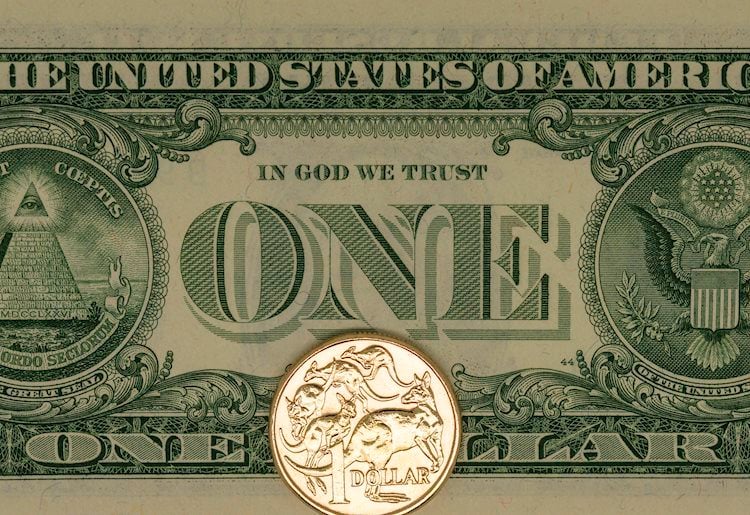Share:
AUD/USD remains sidelined after posting the biggest weekly loss since August 2022.
Fears of RBA’s less hawkish capacity versus Fed, global growth fears weigh on Aussie pair.
Weekend news from China, Russia puts a floor under the risk-barometer pair.
Inflation clues from Australia, US and central bankers’ speeches eyed for clear directions.
AUD/USD licks its wounds at the lowest levels in a fortnight, making rounds to 0.6680-85 after falling the most in 10 months the previous week. In doing so, the Aussie pair struggles to justify the mildly positive sentiment in the market, mainly due to the weekend news from Russia and China, amid fears of easing divergence between the Reserve Bank of Australia (RBA) and the Federal Reserve (Fed).
The doubts about Russian President Vladimir Putin’s power in Moscow and hopes of major stimulus from China allowed trades to witness cautious optimism on early Monday and weighed on the US Dollar.
“Heavily armed Russian mercenaries withdrew from the southern Russian city of Rostov under a deal that halted their rapid advance on Moscow but raised questions on Sunday about President Vladimir Putin’s grip on power,” said Reuters in this regard.
On the other hand, Ning Jizhe, deputy head of the economic committee of the Chinese People’s Political Consultative Conference (CPPCC) and a former vice head of the National Development and Reform Commission (NDRC) flagged concerns about sooner stimulus from China and allowed the AUD/USD to rebound, due to its business ties with Beijing. “China needs to step up measures as soon as possible to bolster a faltering post-COVID recovery in the world’s second-largest economy,” said China’s Ning Jizhe per Reuters.
However, headlines suggesting major investors’ pause in China optimism join hawkish comments from the Fed officials and comparatively upbeat US data to weigh on the AUD/USD price.
“Investors are waiting for a big burst of stimulus from China before they make more aggressive bets on a recovery, having spent the past few months disappointed by economic data and a lack of meaningful policy response from Beijing, said Reuters.
It should be noted that the Fed officials rush towards suggesting two more rate hikes from the US after witnessing upbeat data. On Friday, US S&P Global PMIs for June came in mixed as the Manufacturing PMI dropped to 46.3 from 48.4 prior, versus 48.5 expected, whereas the Services PMI improved to 54.1 from 54.0 expected despite being lesser than the 54.9 previous monthly figure. With this, the Composite PMI declined to 53.0 versus 54.4 market forecasts and 54.3 prior.
Amid these plays, S&P500 Futures rise 0.20% intraday near 4,400 despite witnessing a downbeat week for Wall Street and gains of the US Treasury bond yields.
Looking ahead, Australia’s inflation and Retail Sales numbers will join the Core Personal Consumption and Expenditure (PCE) data, the Fed’s preferred inflation barometer, to direct this week’s AUD/USD moves. Also important to watch will be speeches of the top-tier central bankers at the European Central Bank (ECB) Forum, as well as the US Bank Stress Test results.
Despite the latest corrective bounce, AUD/USD remains bearish unless providing a daily closing beyond the 200-DMA, around 0.6695 by the press time. That said, the Aussie pair’s fresh downside can aim for the key support line stretched from early March surrounding 0.6625.
Share:
Feed news





